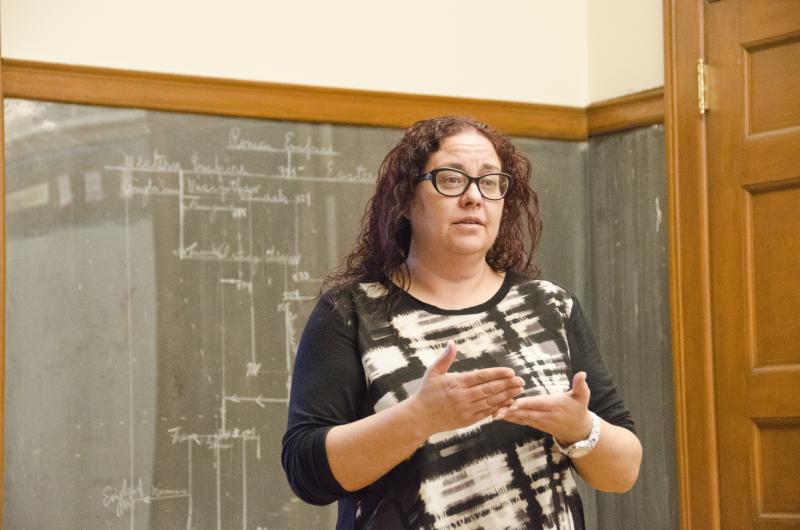Addiction group discusses signs of opiate overdose
Dealing with opiate addiction is something that can’t be ignored, said Connie Mimoso.
“If we don’t talk about it, we don’t beat it,” she said.
Mimoso, director of community health services at Seven Hills Behavioral Health, spoke at the Mattapoisett Council on Aging on Tuesday night in an overdose prevention information session initiated by the REGAIN Drug Addiction Family Support Group.
Mimoso said the medical community started the opioid epidemic by handing out the drugs too freely. Now opiates are available on the streets, including a form of fentanyl that comes from China and Mexico.
“It could be all kinds of things. It’s the unknown. That’s what’s driving the epidemic,” Mimoso said.
Among the ways to prevent opiate-related deaths is Narcan, an overdose reversal medication. But first, said Mimoso, it’s important to know the difference between someone who is “really high” and someone who is overdosing.
Both have small “pinned” pupils, but they will respond differently to a sternal rub, a rough rub of the knuckles against someone’s sternum. Someone who is overdosing will not respond while someone who is really high will move and cry from the pain. Mimoso also said yelling the persons name and saying you’re going to call 911 will often rouse someone who is really high, while someone overdosing won’t budge. Additionally, someone who is overdosing will have slowed or no breath; may make gurgling, snoring or choking sounds; and may have blue lips or fingertips.
For someone who is overdosing, Mimoso said to always call 911 first and then administer Narcan because it could take multiple doses to revive someone. Additionally, Narcan can wear off, and a person can overdose again. Moreover, said Mimoso, if an individual is on a cocktail of drugs, the Narcan may not be enough to prevent an overdose as it only works on opiates.
Mathew Vangel, who founded the REGAIN group with his wife Jackie, has experienced the effect Narcan can have firsthand. Once outside a meeting at a rehabilitation clinic, he said someone overdosed, and the ambulance went to the wrong address. “It took four uses [of Narcan] because of the amount of heroin. What you give them might not last.”
Mimoso, along with local public health nurses in attendance, also said senior citizens are at risk because they may accidentally taking too many medications.
“Nobody thinks of them,” said Mimoso. “There’s still a lot of work we need to be doing with families and caregivers.”
The issue of opiate addiction is something that many in the community are becoming more aware of as churches, educators and others work to get more education.
Amy Dow, director of mission development for the Cranberry Catholic Collaborative, attended the training and said she’s been surrounded by recovering addicts since she was born, from her father to her two brothers.
“I’ve always been in the recovery world,” she said.
They dealt with alcoholism, but in recent years three of Dow’s friends’ have seen their children die from overdoses. Now she wants to learn more.
As Vangel said, everyone knows someone who has been affected by addiction.
His faith-based group, REGAIN, meets at the Council on Aging, 17 Barstow St., the first and third Tuesdays of the month, 6-7:30 p.m. More resources are available through public health nurses offices in the tri-town.
The event ended with a training on how to administer Narcan.
Read more about REGAIN here.














